Law & Politics
On the Case: Everything You Need to Know About Creating a Virtual Reality Tour
Accurate goes before cool when creating VR for museums.
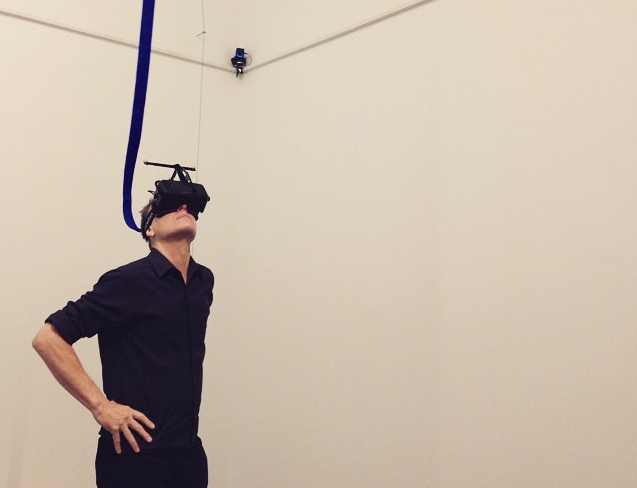
Accurate goes before cool when creating VR for museums.

Charles and Thomas Danziger

For those readers who are living in a cabin in the woods (and are presumably reading artnet by candlelight), we are happy to report that the hottest craze of this summer is Pokemon Go, a wildly popular augmented reality game. But Nintendo, the company behind Pokemon Go, isn’t the only one cashing in. Museums in the US and abroad have also seen a spike in attendance thanks to the game. Arkansas’s Crystal Bridges Museum, for example, has reportedly seen an almost 30 percent increase in attendance as visitors capture Pokemon in the galleries.
Since so many are being bitten by the virtual bug, it’s perhaps not surprising that museums and historic sites have recently asked our advice about creating tours and experiences using virtual reality (“VR”) and augmented reality (“AR”). Below are some of their questions and our answers.
What is VR and how does it differ from related technologies?
VR creates a digital replica of the physical world, or can be a fantasy world, in which the viewer is so totally immersed (thanks to wearing a head-mounted display) that the real world disappears. That’s in contrast to AR, which lets one see both the real world and the digital augmentation, and different from a 360-degree video (sometimes also called “VR”) which one can view on a computer or phone screen.

Guests enjoy a virtual reality experience at the Storefront for Art and Architecture’s Beyond Borders benefit gala at the TWA Terminal. Courtesy of Petros Pattakos/Storefront for Art and Architecture.
How do we know if VR is right for our museum?
Begin by asking what your institution wants to achieve with this technology. Do you want to bring attention to not just your collection but also your museum building? If so, you might want to speak with InceptionVR, which landed an aerial drone with a camera on the dome of Spain’s Dalí Theatre-Museum before virtually descending through the patio and into the museum’s Treasure Room. Is your goal to bring your audience to less traveled parts of your institution? In that case, perhaps call Timelooper, which uses VR to bring to life key moments in history. Timelooper helped London’s Tower Bridge attract visitors to the site’s less frequently visited “engine room.” That’s the room that raises and lowers the bridge, and which—surprise!—happens to be conveniently located near the gift shop.
Do museums typically enter into exclusive arrangements with VR developers?
It varies. According to Daniel Moroz, co-founder of Ascape VR, which curates immersive travel videos in 360 degrees, every scene that goes into the final content belongs to the museum, but the shots left on the editing room floor belong to the company.
What are some key questions our museum should consider when negotiating a VR contract with a developer?
Like many commercial ventures, this is largely about the money and who owns potentially valuable rights. For instance, determine up front who pays for VR filming. Who owns the VR recording, including the right to license it to others? How will you share any revenue derived from the recording? And there are some VR-specific questions that don’t arise in other contexts, including whether the developer knows how to reduce the risk of potential VR-induced nausea—such as by not jumping too quickly between different scenes. Copyright is another “hot button” in this area (more on this below).
Are there advantages to working with a VR developer that has museum experience?
Yes (obviously). According to Elizabeth Reede, CEO of WoofbertVR and former MoMA curator, a museum alum will recognize that “accurate goes before cool” when creating VR for museums. She points out that when WoofbertVR created a VR experience for the Courtauld Gallery, it was careful to capture the exact lighting, gilding on frames, and texture of paint. At the same time, InceptionVR CEO Benny Arbel stresses: “Simply showing the artwork to the viewer is not a good use of VR. This is something people can view in the gallery or even on their computer screens without any need for a headset. Good VR content interprets the piece through a creative development of the artwork, as well as through voiceovers, access to the artists’ inspiration, and more.”
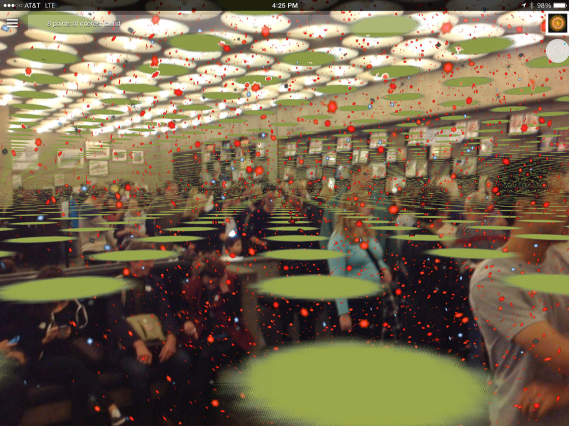
Will Pappenheimer, Proxy, 5-WM2A, 2014. Screenshot from augmented reality application. Courtesy of the Whitney Museum.
Should we make our VR experience accessible to anyone anywhere, or only to visitors on-site?
The two options aren’t mutually exclusive and depend on the goals of the institution. If you want to make your museum more available to those living far away, you might want the VR recording to be accessed from anywhere. But if your intent is to make the on-site experience feel as authentic as possible, consider unlocking it only on-site. Timelooper’s co-founder Andrew Feinberg notes that today’s visitors to the Egyptian pyramids typically wade through souvenir shops but could have a more authentic on-site experience by using VR headsets to transport themselves to ancient Egypt and witness the pyramids actually being constructed.
Does our museum need copyright permission from the rights holders when we shoot VR footage of contemporary art that we own?
Yes. Just because you own the artwork doesn’t mean you own the copyright. But you knew that already, right?
Do we really need to clear rights for every work that we include in our VR tour?
Only for works still under copyright, which in the US generally means until 70 years after the death of the creator.
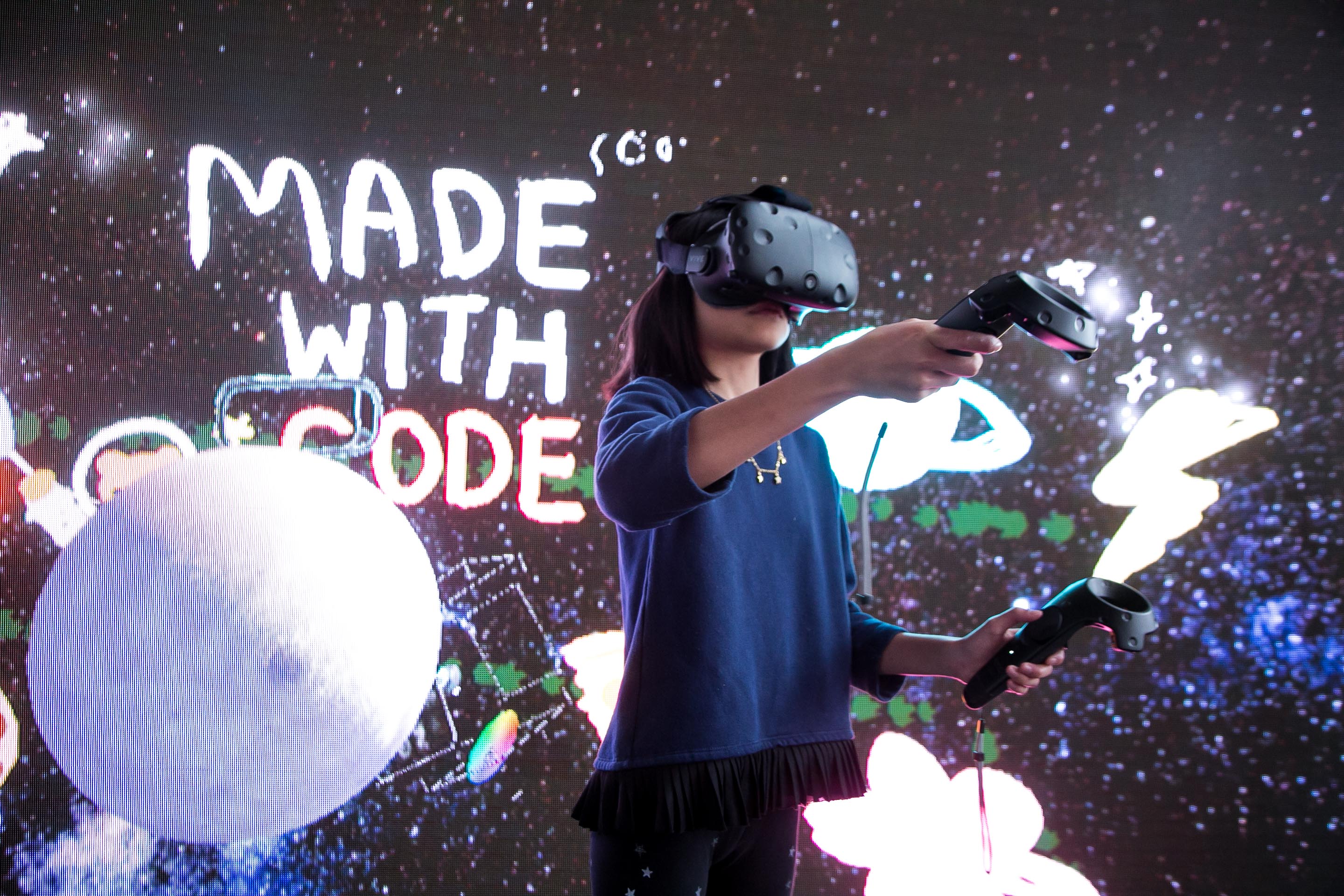
A guest uses Google’s Tilt Brush virtual reality drawing tool at the Pioneer Works 2016 Village Fete. Courtesy of photographer Angela Pham/BFA.
Do I need permission to incorporate historical facts or someone’s ideas in my VR recording?
No. Copyright does not protect facts or ideas. As Timelooper’s Andrew Feinberg rightly observes, “You can’t copyright history.”
Our institution just built a splashy new building. Before filming its exterior in VR, do we need the architect’s permission?
No. Although Congress adopted the Architectural Works Protection Copyright Act of 1990 to protect the copyright in architecture, that law expressly allows the free creation, publication and distribution of pictorial representations of buildings located in, or ordinarily visible from, a public place.
How about filming our building’s interior in VR?
If your museum is open to the public, its interior spaces are considered public places and you don’t have to clear rights with the architect.
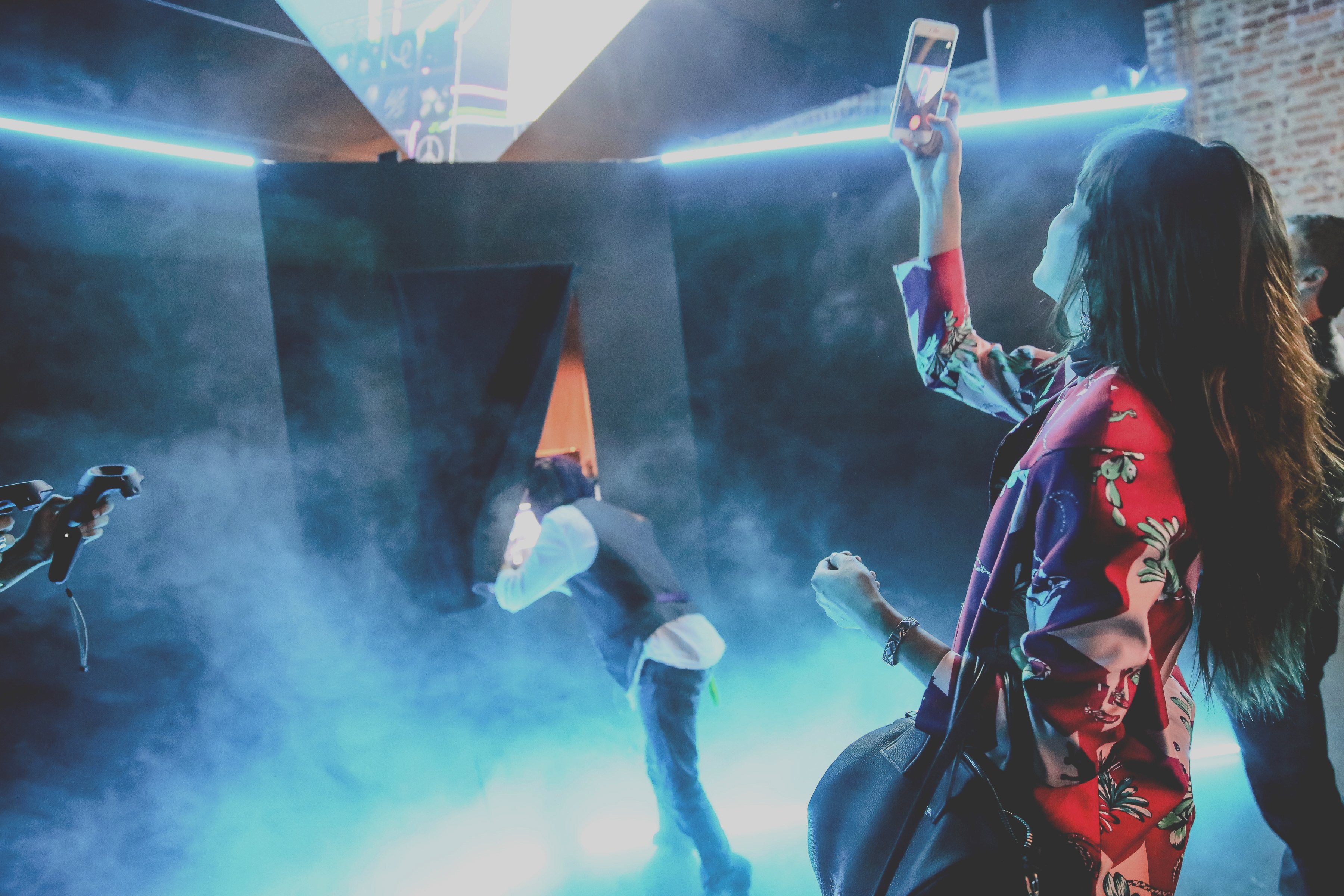
Natalie Suarez photographs guests using Google’s Tilt Brush virtual reality drawing tool at the Pioneer Works 2016 Village Fete. Courtesy of photographer Angela Pham/BFA.
There is a sculpture garden outside our museum that is visible from the street, and free and open to the public. Do we need copyright permission to film the sculptures in VR?
Yes. Sculptures are not considered architectural works, so even if the sculptures are located in a public place, you need copyright permission to film them.
A contemporary sculpture is built into the tower of our museum. Do we have to clear rights with the sculptor before filming the building in VR?
Tricky question. The answer depends on whether the sculpture is separable from the architecture (such as a statue placed on top of the tower), in which case you need to clear the copyright. If it’s not separable, you probably don’t need permission. In the federal case Leicester v. Warner Bros, in which a building and adjacent sculpture were filmed for the movie Batman Forever, the court ruled in 2000 that because the sculptures took the form of towers identical to the towers used in the architectural design of the building, the sculptures were so integrated into the building that copyright clearance was not necessary.
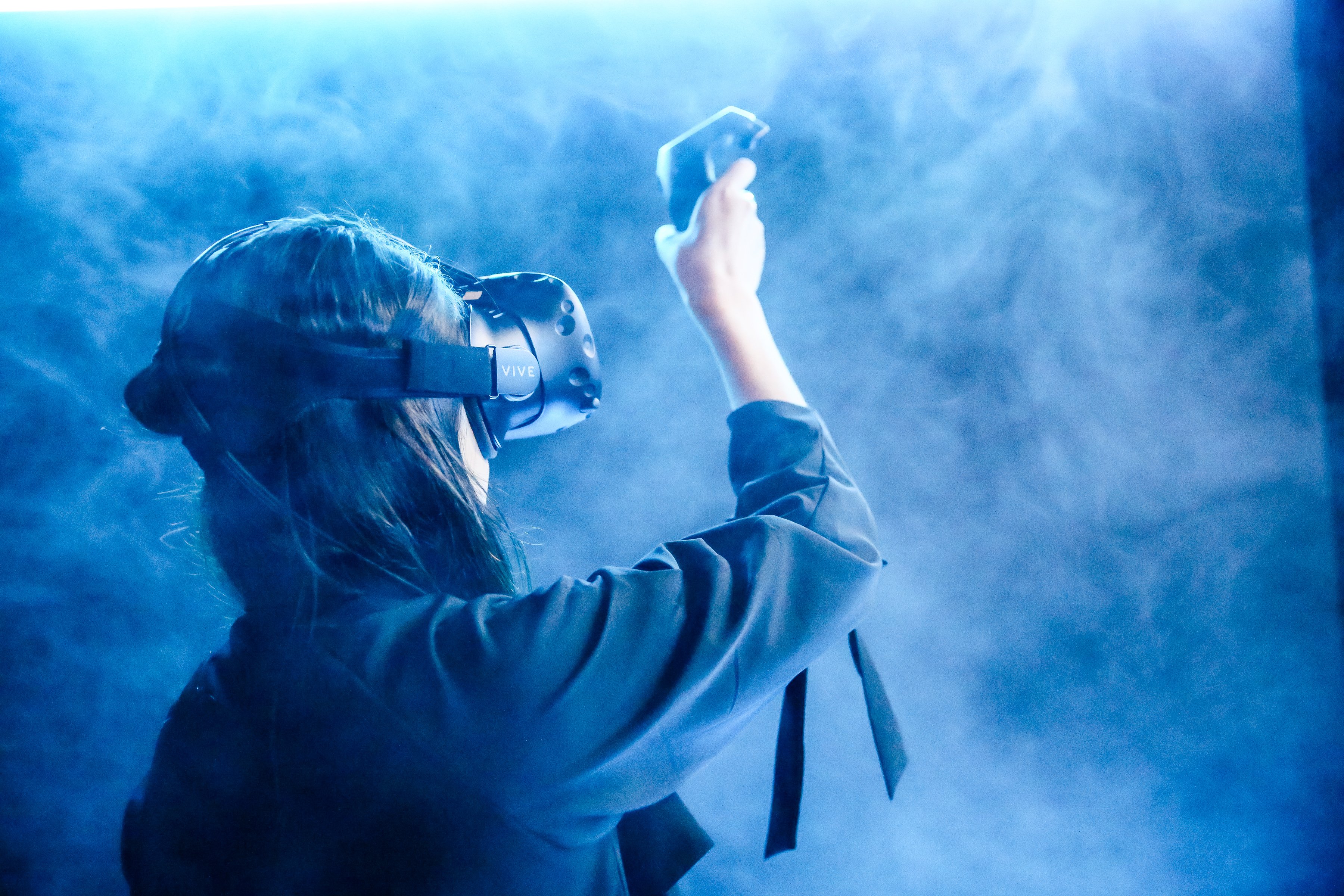
Dylana Suarez uses Google’s Tilt Brush virtual reality drawing tool at the Pioneer Works 2016 Village Fete. Courtesy of photographer Angela Pham/BFA.
Do we need copyright permission to create a VR tour of public monuments in our community?
Yes. In the 2010 federal case Gaylord v. United States, the sculptor of the Korean War Memorial successfully sued the US for copyright infringement for using a photo of the monument on a postage stamp without his permission.
Our VR tour will be for educational purposes, so can’t we get around any copyright restrictions by relying on a “fair use” defense?
That’s risky, particularly because a fair use determination involves balancing four somewhat vague factors: the purpose and character of the use, the nature of the copyrighted work, the amount and substantiality of the portion taken, and the effect of the use upon the potential market for the copyrighted work. These factors become even more uncertain in the context of VR since one can’t predict how long a VR user will linger over a particular work.
We want to create a VR tour of major European streets, parks and plazas so that VR users can stroll through them as though they are actually there. Are there European laws that let us depict these public places in VR without needing to clear copyrights for each public place?
Yes. They’re commonly called freedom of panorama (“FoP”) laws, and they are basically exceptions to copyright restrictions. However, since the EU Copyright Directive made it optional for member-countries to adopt FoP laws, not all EU countries have them. Moreover, in countries with such laws, there are significant variations in what is covered, so you should check the law of each country before filming a particular site there.
Under the UK’s freedom of panorama law, can I film the “London Eye” giant Ferris wheel in VR without copyright permission?
Probably, since the UK has one of the most liberal FoP laws in the world, allowing the free creation and distribution of images of buildings and 3D works of art visible from any public place, including interiors.
How about filming contemporary works inside the Tate Modern?
You need permission from the copyright holders, since UK law specifically excludes 2D works, such as paintings or photographs, from its FoP law. Also, be careful not to violate any filming restrictions established by the museum.
I’m creating a virtual boat tour on the Seine in Paris. Do I need copyright permission to shoot buildings along the river that are still under copyright?
Yes, since France has not adopted any freedom of panorama laws.
How about filming the Eiffel Tower in VR?
You don’t need permission to film it during the daytime, since it is no longer protected by copyright. But because the lights illuminating the Eiffel Tower are still protected by copyright, you will have to clear rights with the copyright owner of the lighting design if you shoot it at night.
Does Germany’s FoP law allow us to create a VR tour of the areas around the remains of the Berlin Wall without copyright permission?
Yes—under Germany’s liberal FoP law, you can create and distribute images of any work permanently located in an outdoor public place. But the key word is permanently. If you are filming a work that is only temporarily on display in public, you need copyright permission. Also, German law requires you to acknowledge the source of any copyrighted work.
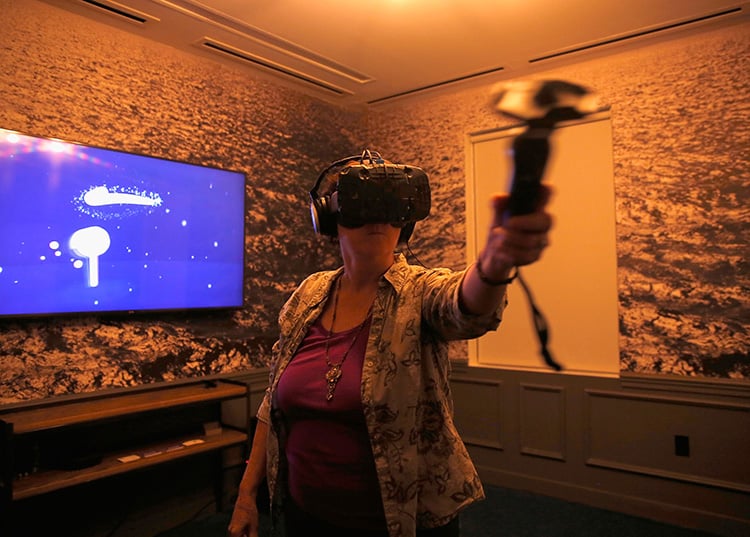
A view of the virtual reality space at WeWork Presents ‘Building Reality’ in conversation with FriendsWithYou, Jen Stark, Devin Troy Strother, Robert Lazzarini, Seth Cameron & New Tropics; moderated by Eric Shiner, director of the Andy Warhol Museum. Courtesy of JP Yim/Getty Images.
Do I need copyright permission to create a VR tour of historic sites in Japan?
Probably not, since Japan’s FoP law allows you to freely create and use images of architectural works that are permanently located in public outdoor spaces. But because the Japanese law does not cover the commercial use of artistic works such as paintings or sculptures, you need to clear rights to such works still under copyright if you want to include them in your tour.
How much research went into this article on virtual reality?
Virtually none. Enjoy your cabin.
Charles and Thomas Danziger are New York–based art lawyers who represent museums, collectors, dealers, banks, auction houses, and others in the art community. For more information, visit www.danziger.com. Their column “On The Case” will appear periodically on artnet News. The authors thank Adam Cohen for his work on this article. Photo: Kate Simon.